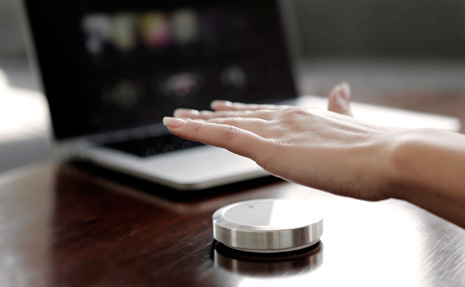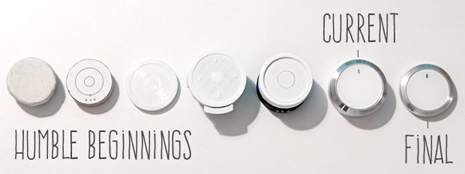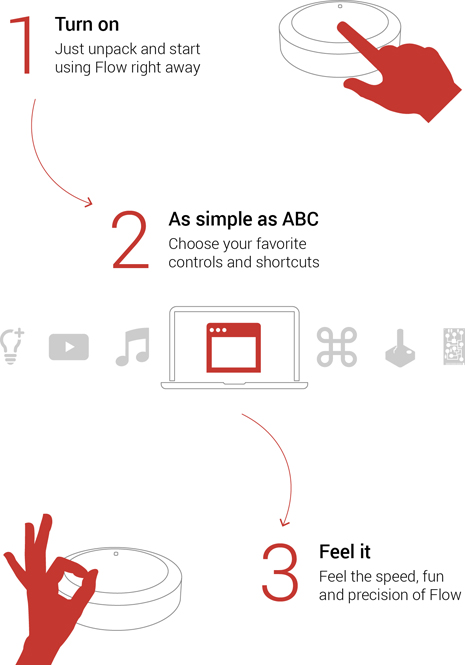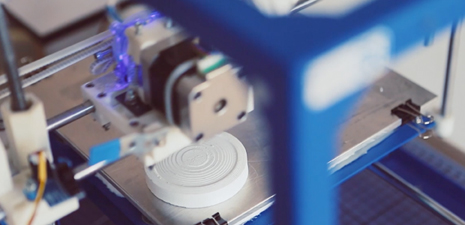
Flow is a peripheral device that can be used alongside a mouse to seamlessly interact with a computer
A bunch of guys in Berlin put their heads together to launch a new peripheral device called Flow that allows digital creatives to speed up their workflow.
Having set up a start-up company called Senic to launch Flow, the obvious place to turn for funding these days is a crowd funding platform. In this case it was Indiegogo.
The Indiegogo campaign launched two days ago and has already reached 84% of its $50,000 funding goal. So, what is it about this nifty tool that is resonating with people?
//player.vimeo.com/video/112589339
The Indiegogo campaign video
Well, although it’s especially useful for professionals in the fields of audio, video, 3D and graphic design, it can be used by anyone who wants to work, play and create in the digital world.
By combining three technologies – hand gesture recognition, sensitive touch and precise haptic – Scenic refer to Flow as “a programmable shortcut to your favourite actions”.
Flow for Photoshop from Senic on Vimeo.
A use case showing Flow being used with Photoshop
Flow came about when industrial designer Felix Christmann created a tool for his personal use to assist him with modelling tasks in Autodesk AutoCAD. He soon found out that it was equally useful for working with other professional software, such as Photoshop as in the video above.
His intention with the design was to take a page out of Dieter Rams’ book who famously said “Good design is as little design as possible.” He wanted it to be beautiful but unobtrusive and fit seamlessly into the user’s life.

The design process of the Flow
A four man team was then set up – consisting of an electrical engineer, computer scientist and product manager – who have spent many months optimising Felix’s original designs and making sure that the product works with major design software out of the box.
Currently, controls have been developed for more than 30 of the most popular applications including Photoshop, AutoCAD, Adobe Illustrator, YouTube, Raspberry Pi, Rhino, and Arduino. The plan was always to build Flow on an open platform, so developers can build even more applications.

Flow is simple to use. Choose between hundreds of setups and create your own personal controls and shortcuts
Tech specs include Bluetooth connectivity, four month battery life, sensors with 360 degrees angular positioning, capacitive touch and hand gesture recognition. The device is made from aluminium, stainless steel and polycarbonate.

Flow went through dozens of iterations until the Senic team were satisfied with a design, both functionally and aesthetically
When Flow was market-ready, Senic launched an Indiegogo campaign to fund the first production run. The plan is manufacture locally in Germany with the first products begin shipped to users in June 2015.






